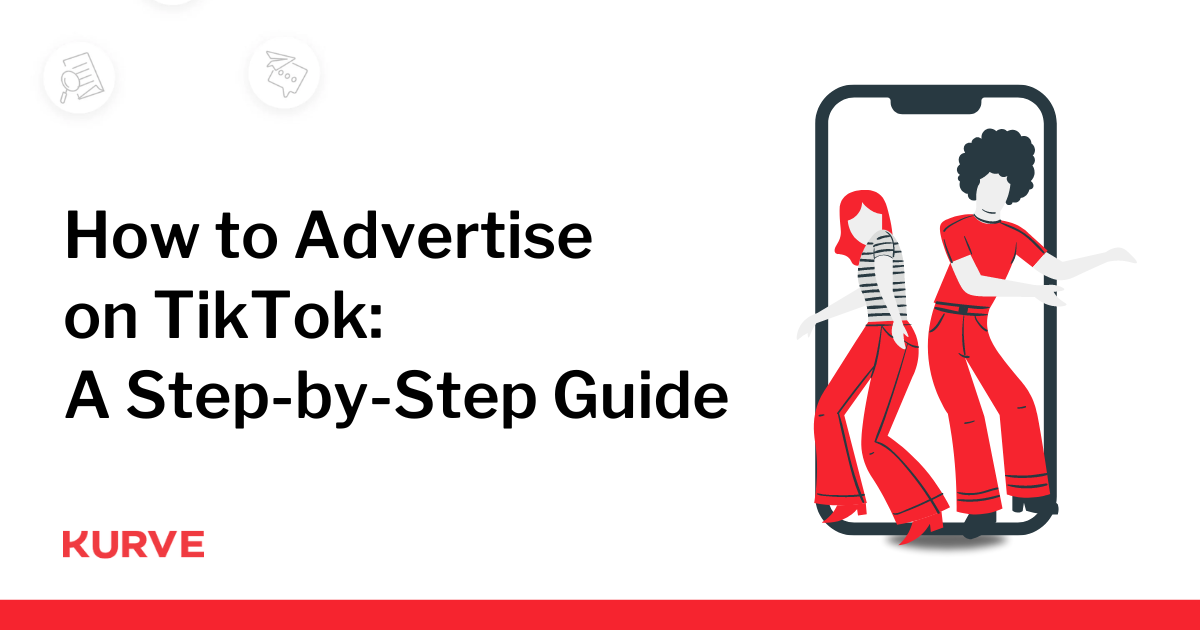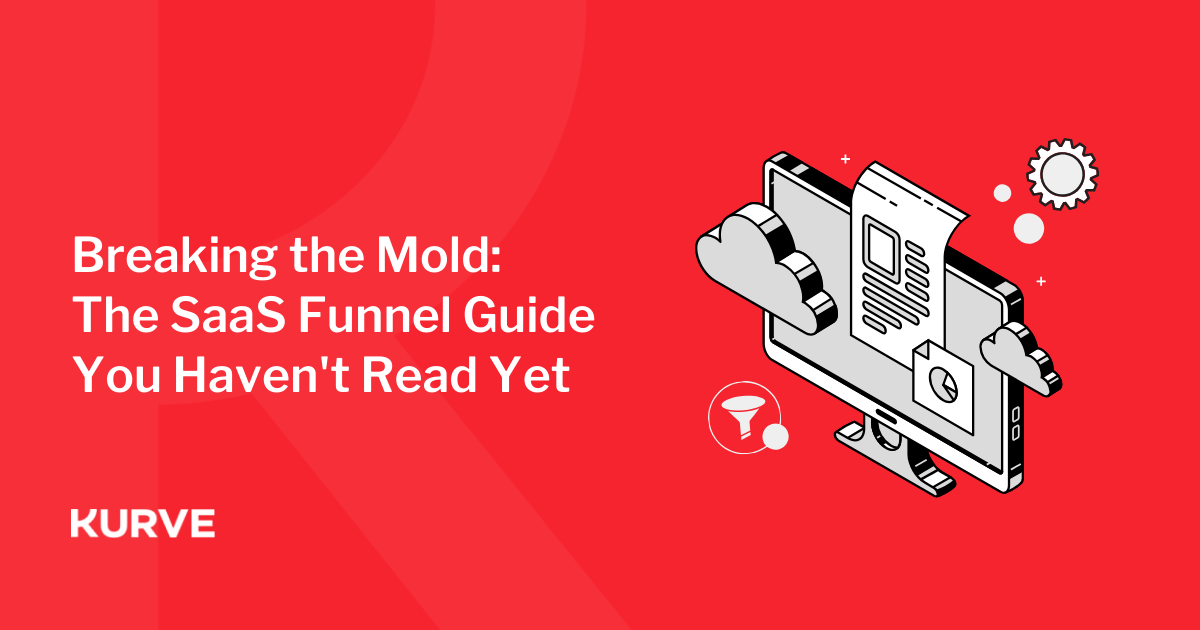What Is the Ideal Cost per Lead?
Marketing and paid social campaigns are essential to driving growth and expanding your business. And yet, most marketing teams need help attributing engagements to conversions and profits. That's where Cost Per Lead (CPL) comes in.
Obtaining 1,000 new customers is great for business, but only if you see a positive return on your ad investment. By calculating and monitoring your CPL, you can evaluate precisely how cost-effective your marketing efforts are.
This article will discuss the benefits of cost per lead over other metrics. We'll provide a reliable way to calculate your CPL, help you identify effective costs, and explore how CPL optimization is essential in a good content strategy.
| Table Of Contents: |
What is Cost Per Lead?

Cost Per Lead (CPL) is a metric used to determine how much it spends to gain each new potential lead through advertising efforts.
CPL is a crucial tool for assessing the strength of a marketing campaign. Businesses can see if their marketing delivers worthy returns or if changes are needed by looking at how much each lead costs and the future profit generated.
A lower CPL isn’t always the aim, though. Businesses use this metric to make informed decisions about the leads they want. Sometimes, they spend more resources to attract higher-quality leads that could generate more revenue, even if they cost more.
In essence, CPL aids in creating a powerfully targeted and effective marketing strategy.
Why Cost Per Lead Is Important
When you drive leads through inbound marketing efforts, you must prove the return is greater than the cost. You need to monitor your marketing efforts to ensure their profitability.
CPL is a vital marketing metric used to measure your campaigns' success and determines if your budget for new leads is better spent in other channels. We define a “lead” as someone who interacts with your business due to your marketing material and expresses an interest in your product or services. This could be by downloading an ebook, booking a consultation, providing contact information like email addresses, or triggering a phone call with your sales team. Ultimately, generating leads is about building trust — using low-intent keywords to produce conversions with more significant value is one example of lead generation.
Cost per lead is a tangible figure assigned to each prospective customer. For example, ten new contacts cost £100, which equals a CPL of £10. We'll provide you with a more accurate lead calculator later. Still, simply put, CPL allows your team to understand your current ROI and conversion rates and better estimate future budgets for acquiring new leads.
Cost Per Lead vs Cost Per Acquisition
If there's a cost, marketers have made an acronym to describe it. Cost per acquisition - CPA, also known as Customer Acquisition Cost - is another valuable piece of information for measuring campaign revenue. And while it might sound similar to cost per lead, their usefulness varies from one department to another.
While CPL compares the cost of marketing with exposure to potential customers, your CPA compares the cost of marketing to the sales it generates. Cost per acquisition is an important metric to monitor. Still, it can take months for B2B companies to collate accurate CPA figures, so it offers the most value to your chief financial officer (CFO). CPL, however, is perfect for marketing departments that need data to make informed decisions in a shorter period.
When you generate leads, you should identify where they sit in your sales funnel to measure their value accurately. For example, a lead classified as an SQL is much more valuable than an MQL. Monitor all leads, and you’re prime for campaign success.
- Marketing Qualified Lead (MQL)
A marketing-qualified lead is more likely to buy than a just plain lead. They’ve shown a clear interest in your products or services, so they’ve moved down the funnel. They’ll need a little more nurturing before they’re ready to buy. - Sales Accepted Lead (SAL)
This is where the handoff occurs between marketing and sales. While the two departments often think of leads differently, they must align here. With unity, valuable leads could stay intact. - Sales Qualified Lead (SQL)
Sales-qualified leads will show unquestionable interest in something you can provide. They’re asking questions and looking for more information about your services. This is where sales teams convert them from leads to customers.
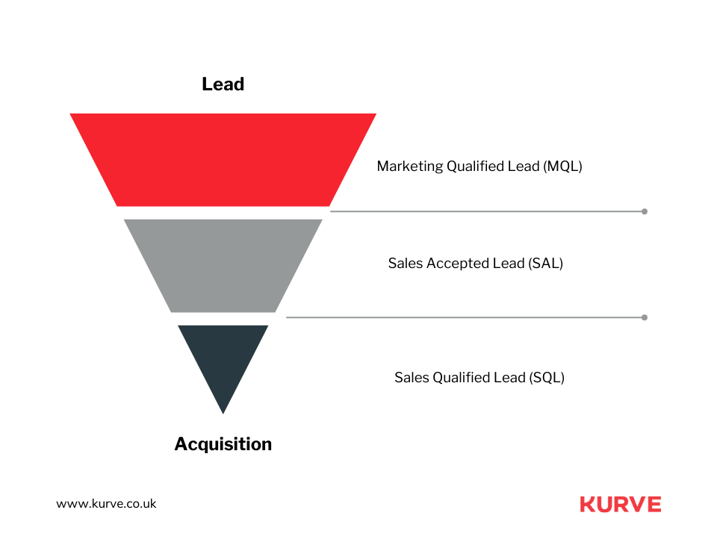
To help explain their differences, let's go back to the assumed figures we mentioned earlier. Your £100 investment that generated ten new leads provided a CPL of £10. Now, if you convert 20% (or two) of those leads into real-world sales, your CPA becomes £50.
You want sales. So why do we measure leads when we prefer to see acquisitions? Focusing too highly on optimizing your CPA can handicap your business's ability to grow by reaching fewer users.
Why a Lower Cost Per Lead Isn’t Necessarily a Good Thing
The most crucial part of evaluating any marketing strategy is whether it is cost-efficient.
Any salesperson will tell you that not all leads are created equal. You can throw buckets of money at marketing campaigns and walk away with leads. Likewise, you can produce budget batches of information that cost pennies and deliver nothing. You need to find the optimal cost with a lead calculator.
A lower cost per lead is desirable, but you shouldn't put budgeting before a good strategy. Consider building an ideal customer profile for your business. The more users that fit this profile, the better your conversion rate will be. Evaluate your customer base, distribute them into categories that share common qualities, and build profiles of these personas. This is your target audience. With better information, you can produce more qualified leads through your content marketing, like Facebook ads.
Identifying the Customer Lifetime Value - or LTV - is essential for your average client. If your acquisition cost is £50, and your lifetime value is £70, then you're only making £20 profit - based on a 100% conversion rate - throughout your customer interaction. However, a more expensive lead costing £100, which returns £200 on average, is a much better prospect for creating a sustainable business. Find out how to calculate your LTV.
Average Cost Per Lead
The industry average CPL can vary wildly with the sector, company size, and marketing channels. Gauging the average cost per lead is great for setting an expectation but needs to be more broadly representative.
Recent studies by Marketing Charts, Hubspot, Socedo, Survey Anyplace, and the Integrated Marketing Association have shown that while retail leads typically cost around £25, technology-centric lead generation for specialists, like those in SaaS, could cost upwards of £150.
This doesn't mean technology companies should assume they'll lose money or see a lower ROI than retail companies. Remember, these averages are comparative metrics for deploying your budget. They have little value as benchmarks, as you should be comparing yourself to market leaders within your specific area of expertise. LTV also plays a significant role in monetary returns, so tech organizations will likely sell fewer but more valuable products than other industries.
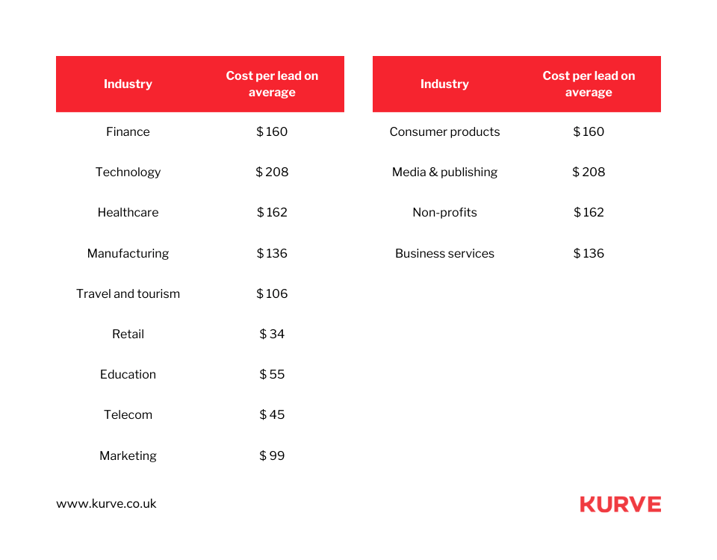
Ad Cost Calculator
Paying for clicks using an untested and new marketing strategy can be a considerable risk. Before deciding about your future ad placements, develop a clear expectation of your ad costs and stick to the budget.
There are many ad cost calculators on the internet, but we like this one from HubSpot. It covers the core components of marketing costs and leaves out the metrics that could muddle the numbers — unless you've collected data from extensive ad campaigns.
Plan cautiously, though, as ad calculators are only as accurate as your pre-campaign valuation. The actual cost of your ads will rely on several other factors that most online calculators can't account for. For example, if you're primarily buying social media ads, you'll have a very different ad cost than email ad campaigns and trade shows. As we mentioned earlier, cost and success differ significantly in various industries.
Effective Cost
Evaluating your ad expenditure before a campaign is important, but analyzing the effective or blended cost post-campaign is essential. Blended CPL is the total sum of leads that your advertisements have generated. Remember, this doesn't include all leads within a fixed period and is only relevant to clicks on each campaign.
To calculate your effective CPL, you should divide the entire cost of your campaign by the number of leads generated, but only after removing contacts from other ads, organic leads, and unpaid connections.
For example, in one month, your business generated 500 new leads. Fifty were organic leads, like those from word of mouth or finding your company in a Google listing. A further 200 clicked on your webpage via a different campaign. Your sponsored social media posts cost £10,000, and you paid a further £2,000 in social management fees.
Your effective cost would be:
£12,000 / 250 = £48 per lead
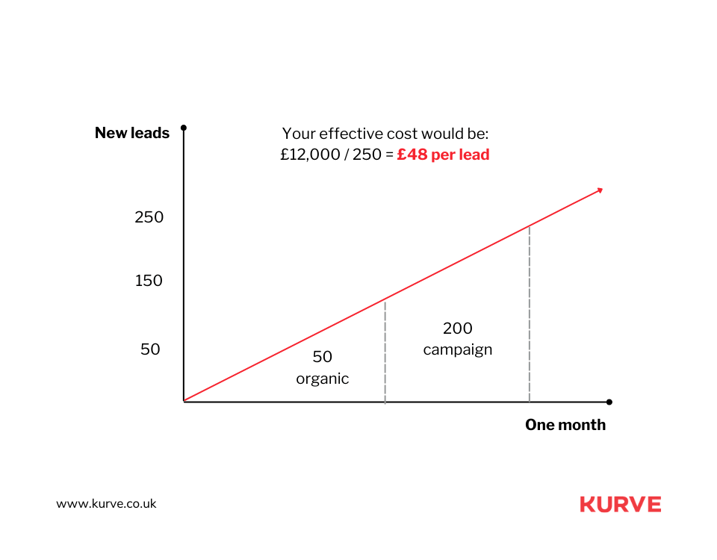
Optimal Cost
As a marketer, you must identify your target CPL. If you require conversions, a higher cost per lead might produce a higher quality lead and an overall lower customer acquisition cost (CAC). If you want quantity, you should lower your CPL - even if the leads aren't as qualified, you'll gain more interactions and better exposure.
Finding the optimal cost can be complicated, and working alongside a team of social advertising experts could prove invaluable. With the right tools for analysis, weekly reports, and a combination of creatives and statistical pros, you'll be better positioned to make the most of every advertising penny, ensuring your paid social media is effective and on budget.
Cost Per Lead Formula for Excel
Now that we've covered the importance of CPL, let's discuss how we can accurately record it. An easy-to-access program like Microsoft Excel is the perfect way to calculate your cost per lead, manage your CPA and record project stats.
A basic cost-per-lead spreadsheet only takes a few minutes to set up. You need to program the following formula into your cells: total marketing spends / total number of leads = CPL. Remember to remove any non-related leads from your calculations.
If you're new to Excel, see this video for a visual explanation.
Marketing analytics like those Kurve provides collates your important data, so you can identify the lead source, qualify leads, and calculate cost per lead and annual revenue in one report.
Regarding generating leads, Google, Facebook, Instagram, LinkedIn, Twitter, and even TikTok are some of the best platforms to apply cost per lead to your marketing strategies and drastically increase your client base. When Seatfrog looked to us to enhance the effectiveness of paid social, we grew their user base by over 400%.
If you’re ready to drive prospect growth, contact our team today.
